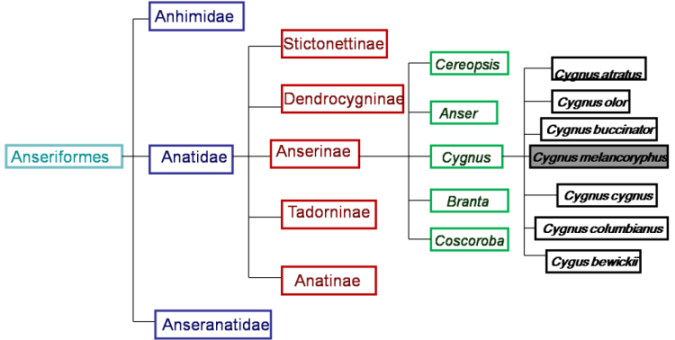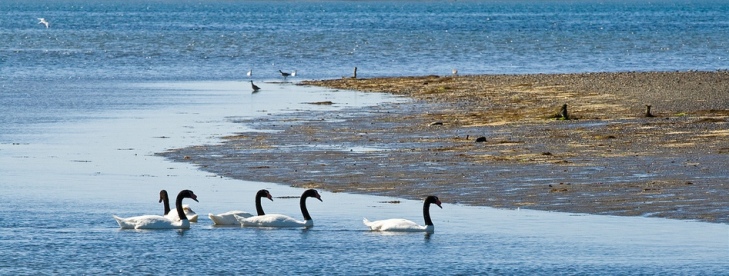Phylogeny- It's all relative!
Organization of waterfowl has challenged taxonomists for decades. Despite the easily identifiable physical features that geese, ducks and swans possess, their taxonomy is quite complex! The relation between species within the Anseriformes (the order that waterfowl falls in) is confusing due to the tendency of many of the species to interbreed. Many times the resulting offspring are fertile, further complicating the classification of these birds. Traditional waterfowl organization was based on morphological and behavioral characteristics. However when DNA analysis became available in the 1970’s, this method was abandoned. Waterfowl taxonomy is now based on a mixture of behavioral, biochemical and anatomical studies, with constant revisions being implemented as new data becomes available. The following phylogenetic tree was created based off classification information found in Natural History of the Waterfowl. The information provided was gathered from biochemical and anatomical analysis. This tree starts with the order Anseriformes and continues through to the species level, showing the relationship between ducks, geese and swans. To find out more about how the black-necked swan fits in the grand taxonomic scheme check out the classification page!

Key: Order – Family – Subfamily – Genus - Species
*Phylogenetic tree based off biochemical and anatomical information provided in Natural History of the Waterfowl.
Want to learn more about some of the black-necked swan’s closest relatives? Check out these cool pages!
Mute swan: http://www.birds.cornell.edu/AllAboutBirds/BirdGuide/Mute_Swan.html
Black swan: http://animaldiversity.ummz.umich.edu/site/accounts/information/Cygnus_atratus.html
